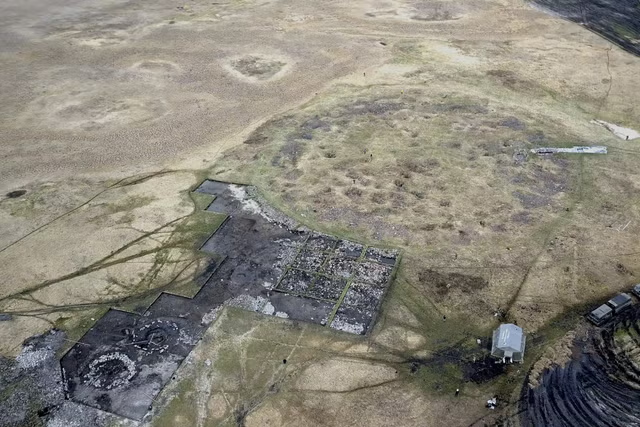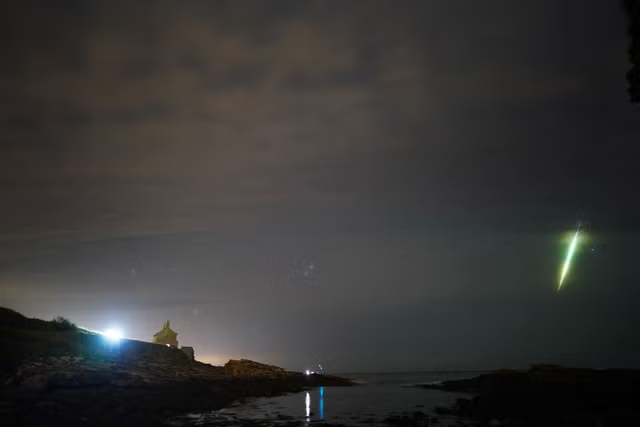Hurricane Milton intensified to a powerful Category 5 hurricane on Monday, having rapidly strengthened from a Category 2 in only a few hours—but could it reach Category 6?
Wind speeds reached up to 180 mph on Monday, and although the hurricane had dropped down to a Category 4 with wind speeds of 155 mph on early Tuesday morning as it moved over the Atlantic Ocean, it is still expected to cause "extremely dangerous" and "life-threatening" conditions when it makes landfall in Florida tomorrow.
Category 5 is the highest category at the moment, but many experts have suggested that as hurricanes get more powerful due to climate change we may need to expand to a Category 6.
More From Newsweek Vault: 5 Steps to Build an Emergency Fund Today
Hurricanes are ranked using the Saffir-Simpson Hurricane Wind Scale, which classifies them based on their sustained wind speeds and the potential damage these winds can cause. The scale has five categories, ranging from Category 1 to Category 5, growing in wind speeds and potential for destruction.
Category 1 hurricanes have wind speeds of 74—95 mph, Category 2 of 96—110 mph, Category 3 of 111—129 mph, Category 4 of 130—156 mph, and Category 5 hurricanes have winds of 157 mph or higher.
A study published by Lawrence Berkeley National Laboratory meteorologists in the journal Proceedings of the National Academy of Sciences in February this year proposed that a new Category 6 is needed for hurricanes that reach wind speeds of 192 mph or higher.
More From Newsweek Vault: Learn More About the Different Types of Savings Accounts
According to the paper, Category 5 storms have become increasingly common in recent years, with five of the storms between 1980 and 2021 reaching wind speeds that would classify them as Category 6 under this suggested framework.
"Of the 197 [tropical cyclones] that were classified as category 5 during the 42-[year] period 1980 to 2021, which comprises the period of highest quality and most consistent data, half of them occurred in the last 17 y of the period. Five of those storms exceeded our hypothetical category 6 and all of these occurred in the last 9 y of the record," the researchers wrote in the paper.
More From Newsweek Vault: What Is an Emergency Fund?
"The most intense of these hypothetical category 6 storms, Patricia, occurred in the Eastern Pacific making landfall in Jalisco, Mexico, as a category 4 storm. The remaining category 6 storms all occurred in the Western Pacific."
Patricia—which hit in October 2015—reached wind speeds of 216 mph, while the other four western Pacific typhoons all reached 195-196 mph. The researchers note that the chance of storms potentially reaching Category 6 intensity has "more than doubled" since 1979.
Ali Sarhadi, an assistant Professor at the Georgia Institute of Technology, told Newsweek: "There is strong agreement that the frequency and intensity of major tropical cyclones (Category 3 and above) are likely to increase as a result of climate change. This is driven by rising ocean temperatures, which provide more thermal energy to fuel tropical cyclones, and the increased capacity of a warmer atmosphere to hold moisture, leading to heavier rainfall during the landfall of these storms."
The paper authors suggested that a Category 6 would "raise awareness about the perils of the increased risk of major TCs [tropical cyclones] due to global warming."
Other experts agree that a Category 6 could be needed in order to fully communicate the scale of an upcoming storm's danger to the public.
"I think what we really want to make folks to do is to take any hurricane seriously, regardless of category," Kelly Godsey, senior service hydrologist and meteorologist at the National Weather Service in Tallahassee, Florida, previously told Newsweek.
"You know, the niche of a Category 6 certainly gets people's attention. The thing that I would always message back as part of the National Weather Service is that, you know, hurricanes are more than just wind speed."
However, not all experts agree that a Category 6 classification is needed.
Liz Ritchie-Tyo, a professor of atmospheric sciences at Australia's Monash University, wrote in an essay for The Conversation website: "Based on the understanding that winds at Category 5 and above lead to catastrophic outcomes, it's hard to see how adding a Category 6 would help the public. If a Category 5 means 'expect catastrophic consequences,' what would Category 6 mean?"
Some also suggest that an entirely new scale is needed, which also includes the potential impacts of rainfall and storm surges.
"The scale, for one thing, fails to account for key hurricane impacts other than high winds. Indeed, the majority of hurricane-related fatalities are due to storm surge (50 percent) and flooding (27 percent). The latter has no bounds," Michael Mann, a professor at the Department of Earth and Environmental Science at the University of Pennsylvania, wrote in a follow-up commentary paper in response to the original PNAS article.
"Precipitation rates—and flooding damage and danger—increase exponentially with rising temperatures. The former is a complicated function of a changing climate, as storm surge depends on not just wind speeds but the size of the storm and the speed of forward progress," Mann added.
The current hurricane scale doesn't look like it's going to change anytime soon.
Milton is now considered to be the fifth most powerful storm ever seen in the Atlantic.
"I am at a loss for words to meteorologically describe you the storms small eye and intensity. 897mb pressure with 180 MPH max sustained winds and gusts 200+ MPH. This is now the [5th] strongest hurricane ever recorded by pressure on this side of the world. The eye is TINY at nearly 3.8 miles wide. This hurricane is nearing the mathematical limit of what Earth's atmosphere over this ocean water can produce," Noah Bergren, a meteorologist at FOX35Orlando, posted to X, formerly Twitter.
Milton is expected to bring storm surges of up to 15 feet to some areas of the Florida coast. Up to 18 inches of rainfall are forecast, which may trigger dangerous flash flooding.
The National Hurricane Center warns: "Milton is expected to grow in size and remain an extremely dangerous hurricane when it approaches the west coast of Florida on Wednesday. A large area of destructive storm surge will occur along parts of the west coast of Florida.
"Areas of heavy rainfall will continue to impact portions of Florida well ahead of Milton through early Thursday. This rainfall brings the risk of life-threatening flash, urban and aerial flooding along with moderate to major river flooding. Flooding will be exacerbated in areas where coastal and inland flooding combine to increase the overall threat."
Do you have a tip on a science story that Newsweek should be covering? Do you have a question about hurricanes? Let us know via science@newsweek.com.
References
Wehner, M. F., & Kossin, J. P. (2024). The growing inadequacy of an open-ended Saffir—Simpson hurricane wind scale in a warming world. Proceedings of the National Academy of Sciences, 121(7). https://doi.org/10.1073/pnas.2308901121
Mann, M. E. (2024). Cat 6 hurricanes have arrived. Proceedings of the National Academy of Sciences, 121(7). https://doi.org/10.1073/pnas.2322597121
Disclaimer: The copyright of this article belongs to the original author. Reposting this article is solely for the purpose of information dissemination and does not constitute any investment advice. If there is any infringement, please contact us immediately. We will make corrections or deletions as necessary. Thank you.



